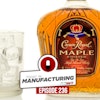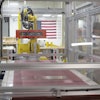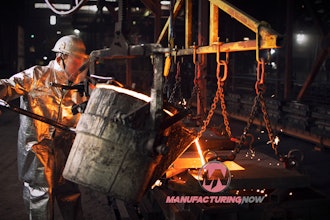Needs for greater food safety and lower operating costs have given rise to dramatic advancements in conveyor technology. Products such as sealed-for-life bearing units, harborage-resistant housings, and seals that grow increasingly protective under pressure are fast taking hold in the market.
Sealed-for-life bearing units
In recent years, food conveyor bearing units and gearboxes that are sealed-for-life so they never require bearing relubrication have steadily replaced conventional relube-required designs. The change is due to a series of performance advantages:
- Sealed-for-life eliminates the potential for mixing lubricants in a bearing, which could undermine lubrication effectiveness.
- Cost savings are realized through lubricant spend reductions and by allowing processors to redirect lubrication personnel to other productive assignments.
- Sealed-for-life guards a bearing's lubricant from exposure to harmful contaminants that could potentially affect food safety.
The criticality of sealed-for-life in food conveyor bearing applications has prompted manufacturers to effectively prevent equipment maintenance personnel from even attempting to relubricate. Certain gearboxes made by Stober Drives, for example, are designed with a virtually inaccessible oil port positioned on the unit’s underside. The port cannot be reached unless the motor is dismounted from the gearbox. Bearing units for food conveyors can be pregreased at the factory, and have no grease fitting.
Bearing materials & seals
In conveyor applications ranging from fryers to freezers, new bearing unit materials and a powerful seal configuration are offering greater protection against washdown, temperature extremes and the entrance of food contaminants into bearing unit components.
Composite plastic bearing units, for example, are gaining broad acceptance over traditional cast iron housings throughout the food processing industry. The housings resist corrosion, feature a smooth surface, and are free of pockets and irregularities that could harbor liquids or contaminants.
Zinc chromate is a relatively new coating material for bearing housings, as well as for insert bearings. Zinc chromate is considered safer than previous generations of zinc compounds, which posed health risks at the point of housing manufacture. Stainless remains a mainstream insert bearing material, but may be more costly than metal-coated alternatives.
Advancements in bearing seal technology also involve materials. The simple rubber lip seal, long the standard for keeping grease in and water out, is giving way to double-lip seals made of engineered plastics. The seal resists high pressure washdowns by becoming stronger as water presses up against it. Bearing units that combine both a composite plastic housing and a double-lip bearing seal can do much to help food producers maintain food safety and cut costs. But significant advancements in lubrication—and lubricant dispensing—are equally noteworthy.
Lubrication
Earlier generations of food-grade H1-compatible bearing grease were valued for their safety but also known for their relatively poor ability to lubricate a surface. As a result, bearing life in many food processing applications was far less than what could be provided by the same bearings had they been lubricated with conventional grease. Today, however, new H1-compatible greases with improved lubricant properties are available in formulations that withstand temperature extremes and a host of operating conditions. Their improved lubricating qualities enable food conveyor bearings to achieve service life comparable to that of bearings operating in other industrial applications.
Available for very high temperatures is a new carbon-based graphite lubricant that comes embedded in food conveyor bearings. The bearings, which are specially heat treated to handle temperatures up to 400º F, have clearances that permit the rolling elements to rotate even in high heat conditions.
Automatic bearing lubricators
Single- and multi-point automatic bearing lubricators meet needs where sealed-for-life bearing technology is impractical due to a bearing’s design and hard-to-reach location. Bearings in robotic arms that pick, pack and cover food with plastic are a case in point.
Automatic lubricators deliver the right lubricant, in the right quantity, to the right location. Canister-like single-point lubricators can employ mechanical springs or newer gas-activating technology to push grease from the container at a predetermined rate.
Multi-point automatic lubricators deliver grease via feed lines emanating from a centralized, refillable grease cartridge. Large systems can service up to 20 individual lubrication points.
For example, a major fruit-juice and beverage producer is using a multi-point lubricator to supply standard NLGI 2 grease to 16 points on a wet-section conveyor line. The lubricator stops water from collecting in conveyor bearing housings and has yielded a 500 percent increase in bearing life expectancy.
Bottle conveyor innovation
Dry lubrication systems can replace conventional water-and-soluble-lubricant mixtures used to minimize friction between conveyor chains and products, and avoid packaging wear in flat-top chain conveyor applications. The SKF Dry Lubrication System, for example, coats the chains with an H-1-compatible dry-film lubricant. The system contributes to operator safety by reducing slipping hazards associated with water and soluble lubricant splashing onto floors, and it delivers an environmental benefit by removing soluble lubricant and high water consumption from the conveying process. In addition, dry lubrication cuts corrosion-induced equipment replacement costs and related unplanned halts in production. It also improves hygiene and can contribute to a bottled product’s image by eliminating the chance of moisture coming into contact with brand labels.
All in all, emerging conveyor technology is providing food processors with a multitude of process options that can improve food safety and lower costs. Authorized distributors of rotating equipment technology are often the best source for obtaining the products, knowledge and service that can put them to the most productive use.


















